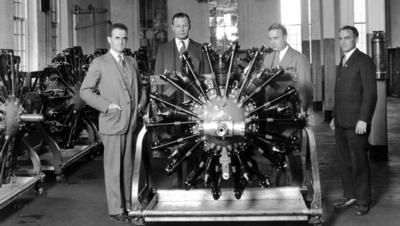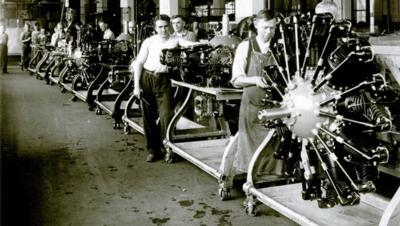Wasp Engine Joins Over 250 Other ASME Landmarks Around The World
The American Society of Mechanical Engineers (ASME) has designated Pratt & Whitney's R-1340 Wasp A engine as a historic engineering landmark, recognizing its technical significance in engineering and aviation.

The Wasp engine joins nearly 260 ASME landmarks around the world, only nine of them in Connecticut, including the Wright Flyer III in Dayton, Ohio, and the Hamilton Standard Hydromatic Propeller in Windsor Locks, Connecticut.
"Having the first engine in our company's innovative history recognized by the industry's leading engineering organization in the United States is a tribute to the small group of visionaries who built it and set the standard for Pratt & Whitney's dependable engines," said Tom Prete, vice president, Pratt & Whitney Engineering. "The Wasp engine's legacy of revolutionizing aviation is present in our game-changing PurePower Geared Turbofan engine and cutting-edge F135 engine."
The Wasp engine was the first engine designed and built by Pratt & Whitney after its founding in 1925. The 1340 cubic-inch radial air-cooled engine achieved levels of performance unheard of in its day. The original Wasp engine spawned a family of engines: Twin Wasp, Wasp Junior, Double Wasp and Wasp Major, powering dozens of aircraft. In World War II alone Pratt & Whitney and its licensees built more than 363,000 engines providing nearly 609,000,000 horsepower, about half the power required by the American air forces.
"The Wasp engine is a most deserving addition to ASME's roster of mechanical engineering landmarks," said ASME President Julio C. Guerrero. "The Wasp engine is an integral part of the proud legacy of one of the world's leading technology firms, while also playing a role in the progress of commercial aviation."

The original Wasp engine was designed to meet a Navy requirement for a powerful, light weight, 400 horsepower engine for planes that would equip its then recently-launched aircraft carriers, U.S.S. Lexington and U.S.S. Saratoga. The original Pratt & Whitney team of about 20 people set to work and by Christmas Eve 1925 the first Wasp engine was completed. At the time it was thought that the red line for a radial engine was about 1800 rpm. The Wasp engine could reach 1900 rpm in normal operation and 2400 rpm in a dive. Company founder Frederick Rentschler was not a man given to hyperbole, but his pride was evident as years later in his memoir he recalled that day. "It ran as clean as a hound's tooth and was just the thoroughbred that it looked. Those characteristics had never been previously achieved in an aviation engine."
Rentschler said that at the time there were "dozens and dozens of suggestions" for naming the engine. "Finally we began gravitating toward 'Bees' as a general designation for our engine types and, according to my best recollection, my wife (Faye) suggested Wasp for the name of our first product."
Pratt & Whitney and ASME will celebrate the historical landmark designation later this spring at the New England Air Museum in Windsor Locks, Connecticut. A plaque will be placed next to one of the first Wasp A development engines, on display at the museum.
(Images provided with Pratt & Whitney news release)
 SpaceX to Launch Inversion RAY Reentry Vehicle in Fall
SpaceX to Launch Inversion RAY Reentry Vehicle in Fall Aero-News: Quote of the Day (04.23.24)
Aero-News: Quote of the Day (04.23.24) Aero-News: Quote of the Day (04.20.24)
Aero-News: Quote of the Day (04.20.24) ANN's Daily Aero-Linx (04.20.24)
ANN's Daily Aero-Linx (04.20.24) Aero-News: Quote of the Day (04.21.24)
Aero-News: Quote of the Day (04.21.24)




